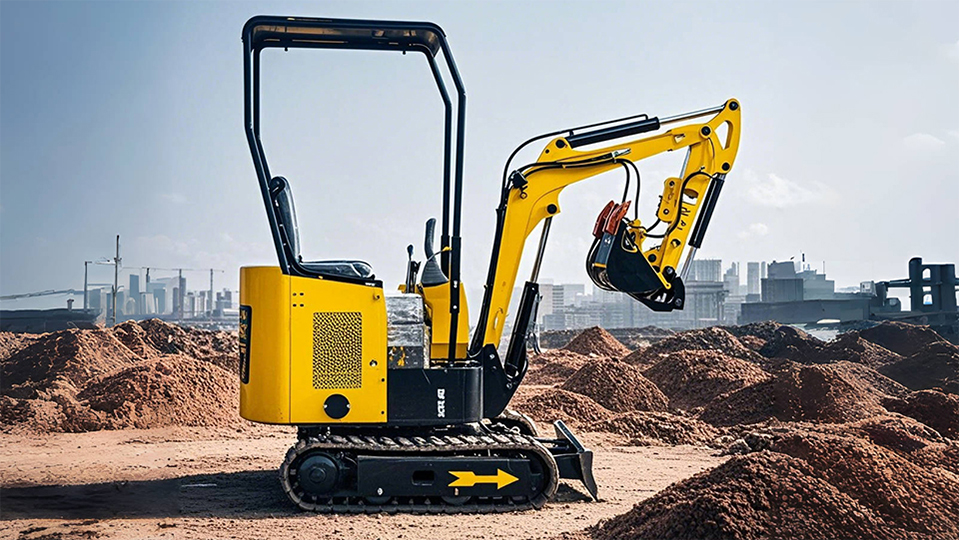Mini Excavator Innovations in 2015: A Technical Retrospective
While 2015 may seem like a distant memory in the rapidly evolving world of construction equipment, it marked a pivotal year for mini excavator technology. This period saw significant strides in efficiency, operator comfort, and versatility, laying the groundwork for many of today's advanced features. This technical article revisits the key mini excavator innovations of 2015, examining their impact and lasting influence.
Enhanced Engine Technologies and Emissions Compliance
A primary focus in 2015 was meeting increasingly stringent emissions regulations. Tier 4 Final/Stage IV emission standards were driving engine manufacturers to innovate, resulting in:

Advanced Diesel Engines: Manufacturers incorporated technologies like diesel particulate filters (DPFs), selective catalytic reduction (SCR), and cooled exhaust gas recirculation (CEGR) to reduce particulate matter and nitrogen oxide emissions.
Electronic Engine Controls: Engine control units (ECUs) became more sophisticated, optimizing fuel injection, combustion, and aftertreatment systems for improved efficiency and reduced emissions.
Fuel Efficiency Improvements: Engine advancements led to noticeable fuel savings, reducing operating costs and environmental impact.
These engine innovations were critical for mini excavators, which often operate in urban areas with strict emission regulations.
Hydraulic System Enhancements: Precision and Power
Hydraulic systems are the heart of mini excavator operations. In 2015, advancements in hydraulic technology focused on:
Load-Sensing Hydraulics: These systems optimized hydraulic flow based on load demands, improving efficiency and reducing energy waste.
Proportional Control Valves: These valves provided finer control over hydraulic functions, enabling precise movements and improved operator accuracy.
Increased Hydraulic Flow and Pressure: Manufacturers increased hydraulic flow and pressure to enhance digging force and attachment performance.
Regenerative Hydraulics: Systems were introduced to recycle hydraulic fluid, reducing energy consumption and improving fuel efficiency.
Improved Hydraulic Filtration: More effective filtration systems extended the life of hydraulic components and reduced maintenance requirements.
These hydraulic improvements translated to greater productivity, precision, and efficiency for mini excavator operators.
Operator Comfort and Ergonomics: A Focus on Productivity
Recognizing the impact of operator comfort on productivity, manufacturers prioritized ergonomic improvements in 2015:
Improved Cab Designs: Cabs became more spacious and comfortable, with adjustable seats, armrests, and controls.
Enhanced HVAC Systems: Advanced heating, ventilation, and air conditioning (HVAC) systems provided better climate control, improving operator comfort in various weather conditions.
Reduced Noise and Vibration: Manufacturers implemented noise and vibration reduction techniques to minimize operator fatigue.

Intuitive Control Layouts: Control layouts were optimized for ease of use, reducing operator strain and improving efficiency.
Improved Visibility: Larger windows and strategically placed mirrors enhanced operator visibility, improving safety.
LCD Displays: The introduction of LCD displays within the cab provided operators with machine data, and diagnostic information.
These ergonomic improvements not only enhanced operator comfort but also contributed to increased productivity and reduced operator fatigue.
Telematics and Machine Monitoring: Data-Driven Operations
The integration of telematics and machine monitoring systems gained momentum in 2015, providing valuable data for fleet management and maintenance:
GPS Tracking: GPS tracking enabled real-time machine location monitoring, improving security and fleet management.
Remote Diagnostics: Remote diagnostics allowed technicians to monitor machine health and identify potential issues remotely, reducing downtime.
Fuel Consumption Monitoring: Fuel consumption data helped optimize machine usage and reduce operating costs.
Maintenance Alerts: Automated maintenance alerts notified operators and fleet managers of scheduled maintenance, preventing costly breakdowns.
Utilization Tracking: Utilization data provided insights into machine usage patterns, helping optimize fleet management.
These telematics innovations empowered fleet managers to make data-driven decisions, improving efficiency and reducing operating costs.
Attachment Versatility: Expanding Applications
Mini excavators are known for their versatility, and in 2015, manufacturers continued to expand attachment options:
Quick Couplers: Hydraulic quick couplers enabled rapid attachment changes, increasing machine versatility.
Tiltrotators: Tiltrotators provided 360-degree rotation and tilting capabilities, enhancing digging and grading precision.
Hydraulic Breakers: Hydraulic breakers were optimized for demolition and concrete breaking applications.
Augers: Augers were enhanced for drilling and foundation work.
Grading Blades: Improved grading blades enhanced finish grading capabilities.
Compaction Attachments: Compaction wheels and plates allowed mini excavators to be used for compaction tasks.
These attachment innovations expanded the range of applications for mini excavators, making them even more versatile and valuable.
Compact Design and Zero Tail Swing:
Mini excavators were already known for their compact design, but 2015 saw further refinements:
Zero Tail Swing (ZTS): ZTS models gained popularity, allowing operation in confined spaces without the risk of rear-end collisions.
Reduced Overall Dimensions: Manufacturers focused on reducing overall machine dimensions for improved maneuverability in tight spaces.
Improved Transportability: Features such as retractable undercarriages and folding booms made mini excavators easier to transport.
These design improvements enhanced the maneuverability and transportability of mini excavators, expanding their suitability for urban construction and confined spaces.
Advancements in Undercarriage Technology:
The undercarriage of a mini excavator is essential for stability and traction. In 2015, advancements included:
Rubber Track Improvements: Rubber track designs improved traction and durability, reducing wear and tear.
Expandable Undercarriages: Expandable undercarriages provided increased stability and flexibility in various working conditions.
Improved Roller and Idler Designs: Redesigned rollers and idlers extended undercarriage life and reduced maintenance requirements.
These undercarriage innovations contributed to improved stability, traction, and durability of mini excavators.
The Lasting Impact of 2015 Innovations
The mini excavator innovations of 2015 had a profound and lasting impact on the industry. The focus on emissions compliance, hydraulic efficiency, operator comfort, telematics, and attachment versatility set the stage for future advancements. Many of the technologies introduced in 2015 have become standard features in modern mini excavators, contributing to improved productivity, safety, and efficiency.
While technology continues to advance, the innovations of 2015 serve as a reminder of the industry's commitment to continuous improvement and the ongoing pursuit of more efficient and operator-friendly construction equipment.
Post time:Sep-25-2020
